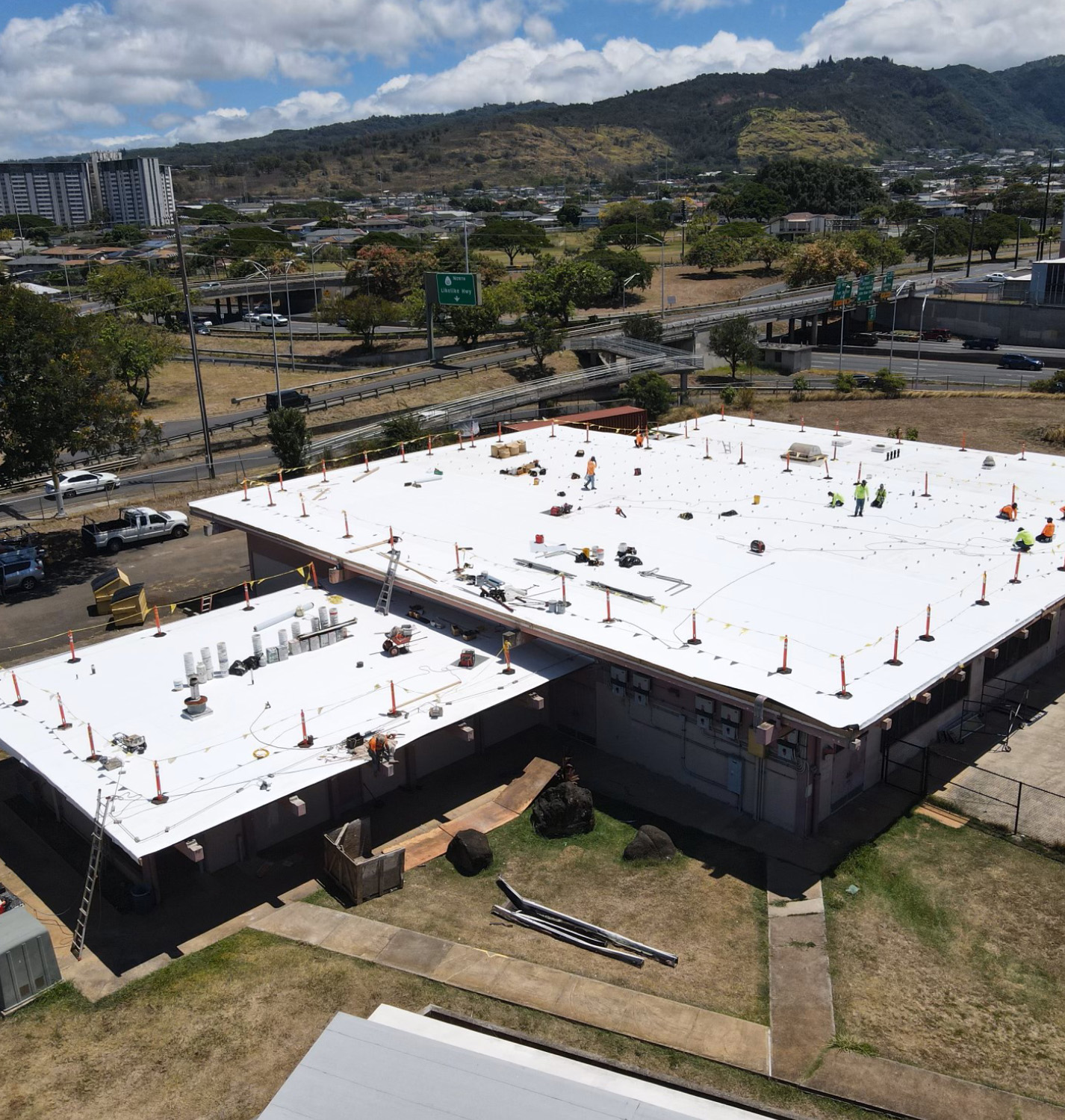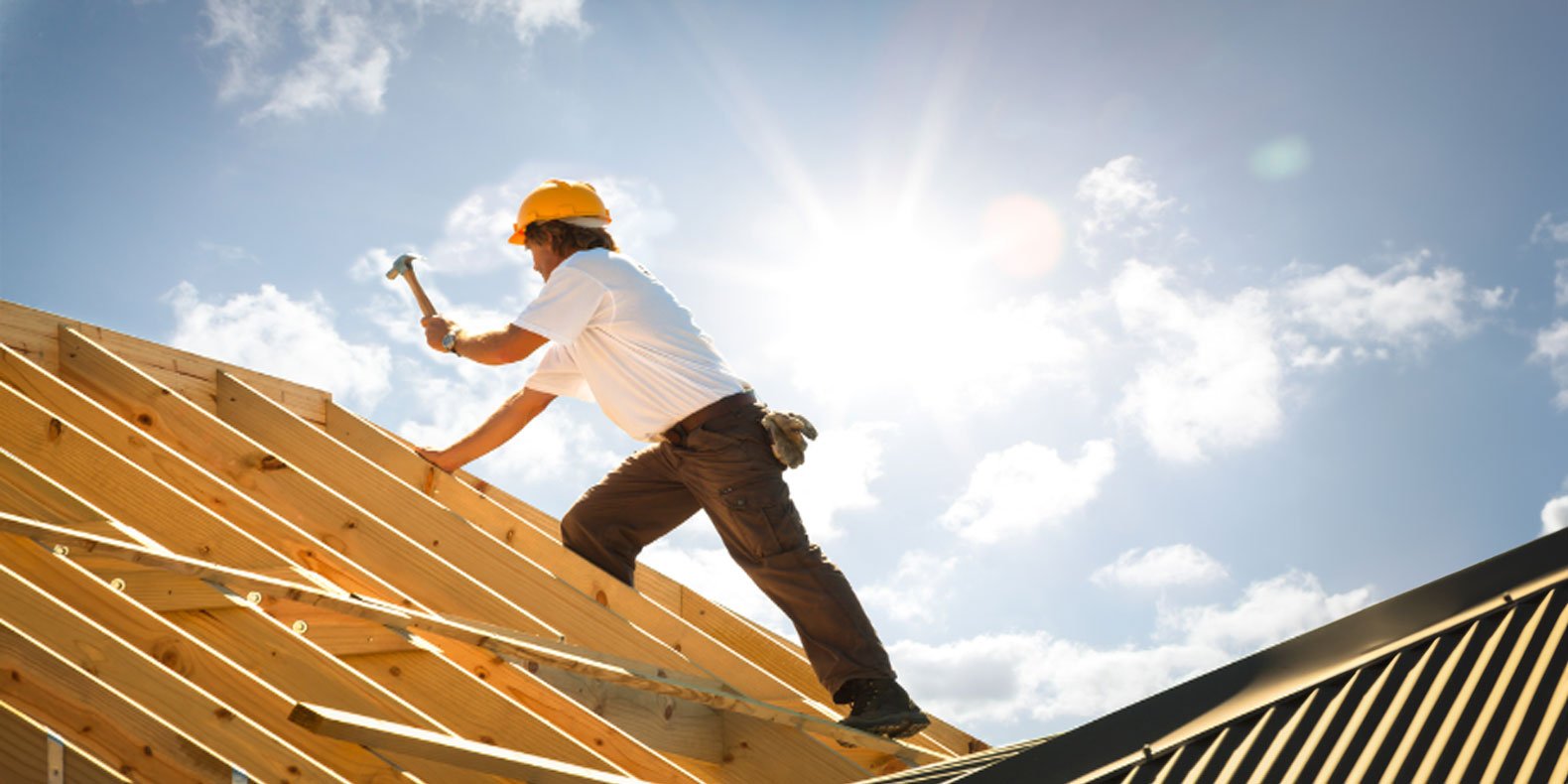Understanding the Different Kinds of Roof Covering and Their Advantages
Each roof covering kind-- from the cost of asphalt roof shingles to the enduring toughness of steel and the ageless appeal of floor tile-- provides distinctive advantages tailored to different demands and choices. As we discover these alternatives better, a much deeper understanding of each roof kind's special benefits may disclose surprising insights that can influence your decision-making procedure significantly.
Asphalt Tiles
When thinking about roof options, asphalt roof shingles usually emerge as a prominent option as a result of their equilibrium of affordability, resilience, and visual charm (oahu roofing contractors). These roof shingles are made up of a fiberglass floor covering covered with asphalt and granules, offering a durable barrier against weather elements. Their light-weight nature permits easy setup, making them a recommended option for both home owners and contractors
Asphalt shingles are readily available in 2 main types: building and three-tab. Three-tab tiles are flatter and use a more typical appearance, while architectural tiles have a thicker make-up and offer a dimensional look. Both types are available in a selection of colors and styles, allowing property owners to customize their roof covering to enhance their home's style.
One of the essential benefits of asphalt shingles is their cost-effectiveness; they are normally much less costly than various other roof covering products, such as floor tile or slate. Generally, asphalt tiles stand for a functional and aesthetically appealing roof remedy for several property applications.
Steel Roof
Steel roof has acquired substantial popularity amongst property owners and home builders as a sturdy and energy-efficient option to traditional materials like asphalt tiles. Consisting of products such as steel, aluminum, and copper, metal roofings are understood for their longevity, often long lasting 40 to 70 years with very little maintenance. This outstanding lifespan significantly minimizes the frequency of roofing system substitutes, translating to long-term expense financial savings.
Among the essential advantages of steel roof covering is its power effectiveness. Metal reflects solar radiant warm, which can help reduced cooling costs in warmer environments. Additionally, lots of steel roof covering products are generated with recycled materials, making them an eco-friendly selection.
Steel roofing systems are also very resistant to severe weather, including high winds, hefty rain, and snow. This durability reduces the danger of leakages and other damage, giving peace of mind to home owners. Furthermore, metal roof is available in numerous designs, colors, and surfaces, enabling personalization to complement any type of building style.
While the initial investment may be more than conventional roof covering options, the long-term benefits of resilience, energy efficiency, and low upkeep make metal roof covering a rewarding consideration for modern-day homes.
Ceramic Tile Roof
Ceramic tile roof provides house owners an unique aesthetic and exceptional longevity, making it a preferred choice for numerous architectural designs, specifically in warmer climates. This roof material is readily available in a range of products, forms, and colors, including clay and concrete, enabling for flexible layout choices that can enhance a home's curb appeal.
One of the key advantages of ceramic tile roof covering is its longevity. With correct maintenance, ceramic tile roofing systems can last upwards of 50 years or even more, surpassing many various other roof covering products. Their integral resistance to rot, pests, and fire more adds to their allure. In addition, ceramic tile roofs can offer excellent thermal insulation, assisting to control indoor temperature levels and potentially lowering power prices.
One more advantage of floor tile roof is its reduced upkeep needs. While setup can be extra expensive compared to other roof types, the investment is commonly justified by the lasting financial savings on substitutes and fixings. Additionally, tile roofing is ecologically friendly, as several ceramic tiles are made from all-natural materials and are recyclable at the end of their life cycle.
Timber Shingles and Shakes
Wood tiles and drinks offer an all-natural elegance and warmth that can boost the aesthetic of any type of home, making them a popular selection amongst property owners that value organic products. These roof covering options are traditionally made from cedar, redwood, or ache, offering a rustic appeal that matches numerous architectural styles.

Wood shingles are machine-cut, providing a consistent appearance and smooth finish. In comparison, drinks are hand-split, resulting in a much more distinctive and uneven look. This distinction can affect the general style and personality of a home, with trembles usually lending a more tough, natural feel.
One of the key benefits of timber roof is its outstanding insulation blog residential properties, which can assist control indoor temperature levels while decreasing energy expenses. Additionally, wood roof shingles and trembles can be treated with fire retardants and preservatives to boost their sturdiness and resistance to degeneration, insects, and dampness.
However, you can try these out it is vital to think about the maintenance needs connected with wood roof. Regular examinations, cleansing, and treatment are essential to extend its life-span. When effectively cared for, wood roof shingles and drinks can supply a sensational and long-lasting roof solution that boosts any property's aesthetic appeal.
Eco-Friendly Roofing Options
As environmental understanding expands, homeowners are progressively looking for environment-friendly roof covering choices that not only minimize their carbon footprint yet also add to lasting living. honolulu roofing company. These roof services are developed to decrease environmental impact while improving energy efficiency and toughness
One popular option is metal roof, which is commonly made from recycled materials and boasts a lengthy lifespan, decreasing the demand for constant replacements. Metal roofs reflect solar warmth, thereby lowering energy prices. Another feasible selection is rubber roof, usually made from recycled tires, offering excellent insulation and toughness.
Environment-friendly roofs, which include plant life and dirt, provide all-natural insulation, aid with stormwater administration, and boost air high quality. They are especially valuable in city areas, assisting to reduce the warm island effect. Furthermore, solar tiles are acquiring grip; they combine traditional roofing products with photovoltaic technology, permitting property owners to generate their own electricity while maintaining visual allure.
Final Thought
Asphalt roof shingles present an economical option with moderate durability, while steel roof covering uses exceptional long life and energy performance. Ceramic tile roof covering stands out for its visual charm and toughness, and timber roof shingles improve insulation yet need thorough maintenance.
